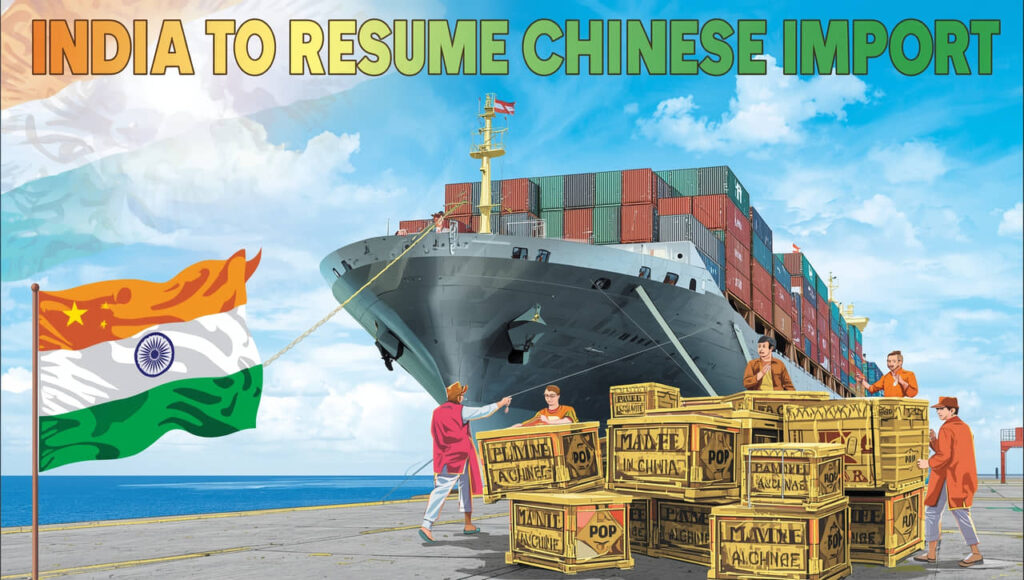India is resuming approvals for the import of goods from China, after a five-year freeze imposed following border conflicts in 2020. The significant policy modification is part of the Government’s overall efforts to mitigate supply chain imbalances, nurture local industry, and address rising consumer demand in India, particularly following cuts to the Goods and Services Tax (GST). That will fast-track approval for goods, including electronic parts, footwear, various household items, and steel products, as well as raw materials. The move itself indicates a thaw in trade relations with China. It is a balancing act between economic dependency and national security concerns, while retaining control over sensitive sectors such as telecoms and dual-use technologies.
Background of the Import Freeze
From mid-2020, after India-China relations plummeted further following the Galwan Valley clashes, India put on hold approvals for many imports from China. This involved introducing non-tariff barriers, such as compulsory certifications for foreign manufacturing units, delayed clearances for electronics and industrial inputs, and increased scrutiny of foreign investments from countries sharing a border with India. Those were mostly on consumer electronics, footwear, steel, and other industrial raw materials that affected supply chains in India.
What Is Changing?
Now, the Indian Government is working to clear the backlog of import proposals and accelerate approvals, and may re-evaluate foreign manufacturing certifications, including for Chinese plants. This will facilitate the availability of adequate credit, increase liquidity in the power sector, and lead to an exceptional rise in demand during the post-GST festive season. With a view to de-clog and streamline the value chain for the supply of medical infrastructure across all parts of India, licences for foreign manufacturers will be extended or renewed based on customer requirements or confirmation from a trade partner here.
Strategic and Economic Implications
This step demonstrates the cautious yet eager reopening of trade relations with China. It props up sectors that rely on Chinese goods, such as consumer electronics, electric cars, clean technology, and industrial manufacturing. The thaw coincided with increased diplomatic activity, including Prime Minister Narendra Modi’s 2025 visit to China and the resumption of direct flights and business visas, marking improved bilateral ties. At the same time, India has kept guardrails up by not allowing automatic approvals for sensitive and strategic sectors to protect national security interests.
Impact on Indian Industry and Consumers
There’s a wave of consumer interest in India for goods amid the festive season, and some products such as big-screen TVs, dishwashers, and refrigerators are running out of stock due to earlier shipment delays. WHO: The accelerated approvals will reduce supply shortages, normalize prices, and satisfy the increasing consumer demand. In addition, supply chains, such as those for Chinese rare-earth magnets, which are crucial to making electric vehicles (OK, I suppose even electronics), have been restored, and the Indian industry in these essential fields has been relieved.
Outlook for India-China Trade Relations
The resumption of Chinese imports is the biggest reset in India-China trade relations over the past five years. It’s a pragmatic calculus that attempts to strike a balance between geopolitical compulsions and economic pragmatism — enabling the world’s fifth-largest economy to continue fuelling its industry and consumer markets while treading cautiously with its neighbor. The measure will likely promote cross-border collaboration, facilitate regional supply chains, and create new business opportunities in manufacturing and technology-based sectors, opening a new path for economic cooperation.
This thaw is significant because trade relations between India and the US are worsening, and global tariffs are changing, suggesting that India wants to diversify and stabilize its trade partnerships amid a complex geopolitical landscape.
